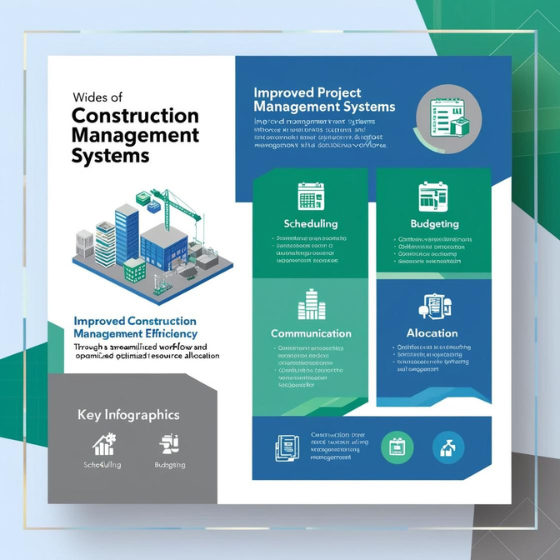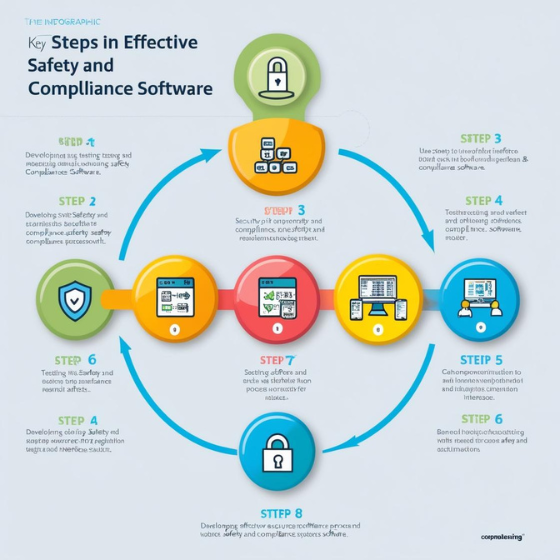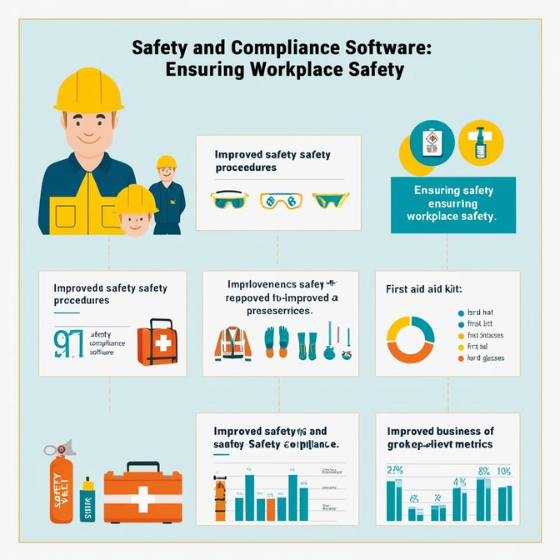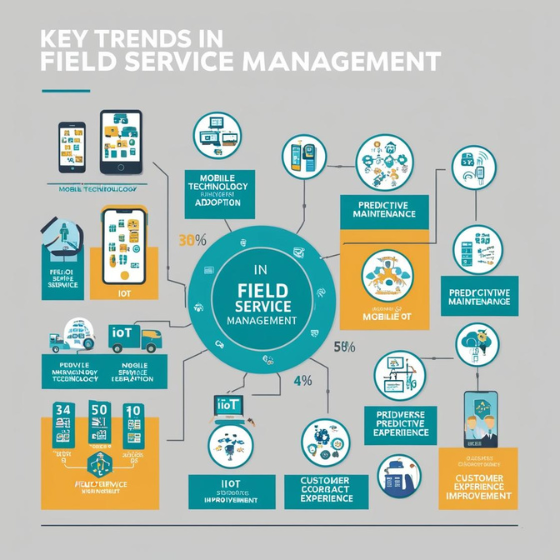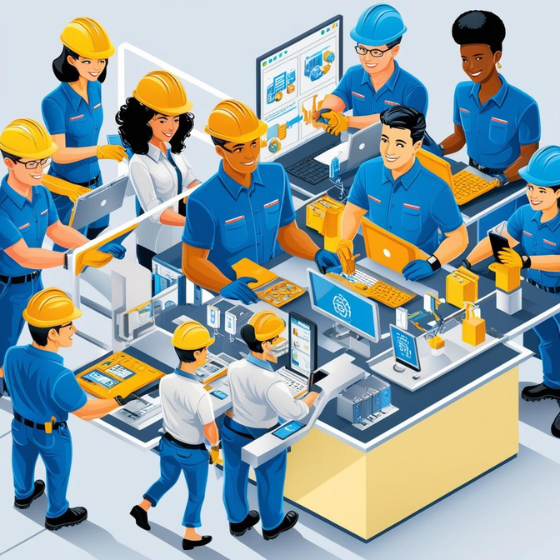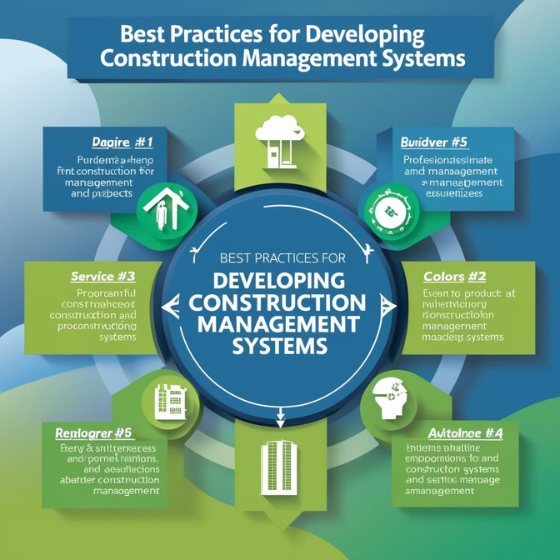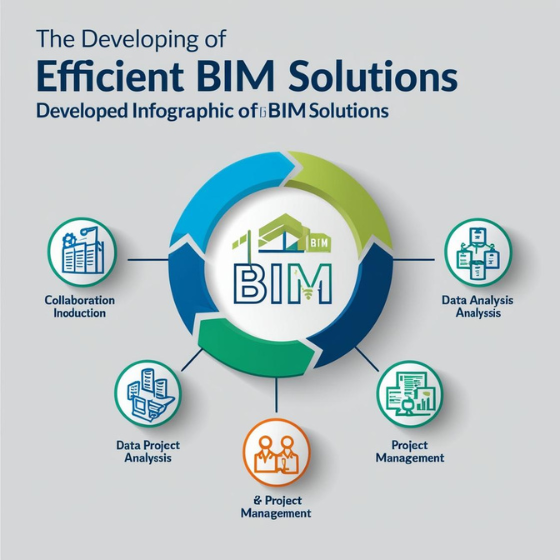Construction Management Systems: Improving Project Efficiency
Managing construction projects efficiently requires more than just experience—it demands the right tools and systems to streamline workflows, minimize delays, and reduce costs. This is where Construction Management Systems (CMS) play a critical role. These systems are designed to integrate planning, scheduling, budgeting, and communication, enabling construction teams to deliver projects on time and within budget.
In this blog, we’ll explore how construction management systems improve project efficiency, their key features, and why adopting these systems is a game-changer for the construction industry.
What Are Construction Management Systems?
A Construction Management System (CMS) is a software platform that centralizes and automates key construction project activities, such as:
- Planning and scheduling.
- Resource and budget management.
- Communication and documentation.
- Risk assessment and progress tracking.
By bringing all these functions into a single system, CMS ensures that project teams have access to the tools and information they need to succeed.
How Construction Management Systems Improve Project Efficiency
1. Streamlined Communication
Construction projects often involve multiple stakeholders, including architects, contractors, engineers, and clients. Poor communication can lead to misunderstandings, delays, and costly mistakes. CMS enhances communication by:
- Centralizing all project-related messages, files, and updates.
- Offering real-time collaboration tools for on-site and remote teams.
- Reducing the risk of miscommunication through document version control.
This ensures everyone stays on the same page, regardless of their location.
2. Improved Scheduling and Resource Allocation
Efficient scheduling and resource management are critical to avoiding delays and cost overruns. CMS supports project managers by:
- Providing tools like Gantt charts and calendar views to visualize timelines.
- Automatically assigning tasks based on resource availability.
- Tracking resource usage in real time to prevent shortages or overbooking.
With these capabilities, teams can optimize schedules and allocate resources effectively, leading to smoother project execution.
3. Enhanced Budget Control
Budget overruns are a common challenge in construction projects. CMS addresses this by:
- Tracking expenses in real time to ensure spending aligns with the budget.
- Providing cost forecasting tools to anticipate future expenses.
- Offering insights into cost-saving opportunities through detailed analytics.
With accurate financial data at their fingertips, project managers can make informed decisions to keep costs under control.
4. Real-Time Progress Monitoring
Tracking progress accurately is essential for identifying potential delays and bottlenecks. CMS provides:
- Dashboards that offer a comprehensive view of project milestones and status.
- Real-time updates on task completion and resource usage.
- Mobile access for on-site teams to report progress instantly.
This visibility allows managers to address issues proactively and keep projects on schedule.
5. Risk Management
Construction projects are inherently risky, with potential challenges such as weather disruptions, labor shortages, and compliance issues. CMS helps mitigate these risks by:
- Identifying potential risks during the planning phase.
- Offering tools for contingency planning.
- Sending alerts and notifications for tasks that may affect compliance or safety.
By anticipating and addressing risks early, CMS reduces the likelihood of costly disruptions.
Key Features of Effective Construction Management Systems
To maximize efficiency, construction management systems should include the following features:
1. Customizable Workflows
Every construction project is unique, so the CMS should allow teams to tailor workflows, templates, and dashboards to suit their specific needs.
2. Integration Capabilities
The system should integrate seamlessly with other tools, such as Building Information Modeling (BIM) software, accounting platforms, and CAD tools.
3. Mobile-Friendly Access
With construction teams often working on-site, mobile accessibility ensures that everyone can update and access project data anytime, anywhere.
4. Document Management
A robust CMS should support version control, file sharing, and secure storage of all project-related documents.
5. Analytics and Reporting
Detailed analytics and customizable reports help managers track performance, identify inefficiencies, and make data-driven decisions.
Benefits of Adopting Construction Management Systems
1. Increased Productivity
Automation of repetitive tasks allows teams to focus on high-value activities, boosting overall productivity.
2. Reduced Costs
By optimizing resource usage and minimizing delays, CMS helps control costs and avoid unnecessary expenses.
3. Better Collaboration
With centralized communication and real-time updates, CMS fosters teamwork and ensures alignment among all stakeholders.
4. Improved Quality Control
Access to accurate data and advanced planning tools ensures that projects are delivered to the highest standards.
5. Faster Decision-Making
With real-time data and insights, project managers can make quick, informed decisions to keep projects on track.
A Real-World Example of CMS in Action
Case Study: Large-Scale Commercial Development
A construction firm used a CMS to manage a large commercial development project involving multiple contractors and stakeholders.
Challenges:
- Delays caused by poor communication and scheduling conflicts.
- Budget overruns due to inaccurate cost tracking.
- Difficulty coordinating on-site and remote teams.
Solutions with CMS:
- Implemented centralized communication tools to improve coordination.
- Used real-time budgeting features to track expenses and prevent overruns.
- Enabled mobile access for on-site teams to update progress and report issues.
Results:
- Reduced project delays by 25%.
- Improved budget accuracy, saving over $300,000.
- Enhanced collaboration, leading to faster issue resolution.
How to Choose the Right Construction Management System
Selecting the right CMS for your business is critical to achieving project success. Here are some tips:
- Assess Your Needs: Identify the specific challenges you want the CMS to address.
- Evaluate Features: Ensure the system offers tools for scheduling, budgeting, collaboration, and reporting.
- Check Usability: Look for a user-friendly interface that your team can adopt quickly.
- Ensure Scalability: Choose a CMS that can grow with your business and handle larger projects in the future.
- Partner with Experts: Work with experienced providers, like Sodio, to develop a customized CMS solution.
Why Sodio for Construction Management Systems?
At Sodio, we specialize in developing tailor-made construction management systems that address the unique needs of your projects. Here’s what we offer:
- Custom Solutions: We design CMS platforms that align with your workflows and goals.
- Seamless Integration: Our systems integrate with existing tools for a cohesive experience.
- Scalability: Whether you’re managing small projects or large-scale developments, our solutions grow with your business.
- Expert Support: From development to implementation, we provide comprehensive support to ensure your success.
Final Thoughts
Construction Management Systems are transforming the construction industry by improving efficiency, reducing costs, and enhancing collaboration. By adopting the right CMS, you can streamline your workflows, mitigate risks, and deliver projects that exceed client expectations.
Ready to elevate your construction management processes? Contact Sodio today to learn more about our custom CMS solutions and take your project efficiency to the next level.
